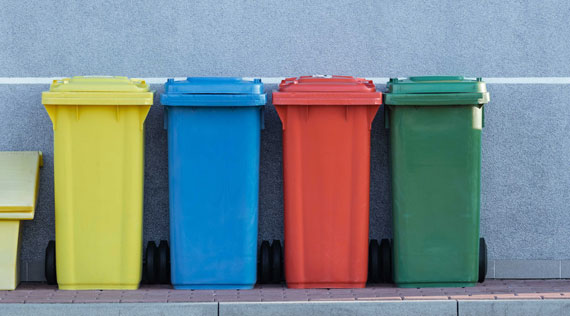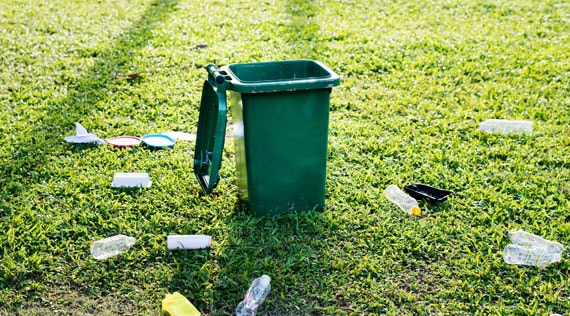In a landmark move, a national recycling strategy is to be launched across the U.S., aiming to streamline recycling bin labels and, in so doing, give the market a desperately needed overhaul.
Rep. Betty McCollum, chair of the Interior, Environment, and Related Agencies Appropriations Subcommittee, has directed the Environmental Protection Agency (EPA) to develop the strategy as part of the subcommittee’s Fiscal Year 2020 appropriations bill. The $37.3 billion FY2020 Interior-Environment funding bill has been passed by the House Appropriations Committee and will now be considered by the House floor.
The initiative will expedite a roll-out of standardized recycling labels, developed by non-profit organization Recycle Across America, to prevent recyclable materials from being contaminated and ending up in landfill.
Chairwoman McCollum released the following statement:
The national recycling strategy is an absolute priority in order to strengthen recycling in communities across America. It is environmental and economic madness to fill landfills and incinerators with recyclable materials because of confusion at the bin. Every household, business, school and institution should be using a standardized system to eliminate contamination and increase effective recycling. I want to thank Recycle Across America for their leadership and tremendous work to partner with me on this language and I am thrilled to be working with them to protect the environment and create jobs by strengthening recycling.
The bill will help to “ensure the long-term economic and environmental viability of local recycling programs by exercising national leadership and facilitating the harmonization of standards.” In the process, it stands to strengthen recycling markets and save billions of dollars’ worth of unnecessary expenditure.
The solution – standardizing labels – seems so simple. Why is it so important?
Think about road signs. We take for granted that these are standardized across, and even between, countries. Now imagine if all the signs had different colors, designs, and terminology, and you were trying to negotiate traffic. It would be chaotic, and everything would come to a grinding halt.
That’s one analogy that Michelle Hedlund, founder of Recycle Across America, uses to explain why standardized labels are so critical. There are many more examples, including time and medical equipment.
“You and I wouldn’t be chatting now if there were no standardized time,” she says. “You know, the exponential impact of one standardization is truly immeasurable.”
For a long time, anesthesia was feared to be more dangerous than surgery. It turned out that simple manufacturing standards could address the issue. Notably, the dials on the equipment that administers anesthetic were not consistent, lending themselves to human error. To increase the dose, some were turned to the right and others to the left. Since addressing such issues, fatalities related to going under anesthetic dropped by 400%, driving home the critical importance of standardization.
When it comes to recycling bins, currently in the U.S., every business, school, and sports stadium has to create their own labels. Hedlund says this is causing confusion, apathy and skepticism. The result: millions of tons of garbage are thrown in recycling bins around the country.
In 2015, the EPA reported that about a third of trash was being recycled. But that didn’t account for recycled materials that ended up in landfill. Yale University investigated how much was actually being recycled and found it closer to one-fifth.
Hedlund noted more than 10 years ago that the problems with recycling started at the bin. Because nothing was being done, she started up the non-profit organization.
Recently, she visited a recycling business and learned it shuts down three hours every day because of jams in the equipment caused by contamination. All sorts of trash ends up in there, from diapers to plastic bags and garden hoses, and even a live chicken according to one report. On top of lost productivity, two-thirds of the plant’s staff are dedicated to ‘quality control’, which Hedlund explains “is a nice way to say digging through the garbage and trying to remove it from the recycling”.
“If you look at just the sheer economics of that type of inefficiency and lack of efficacy, it’s pretty devastating when you extrapolate that across the country,” she says. There are more than 600 recycling processing plants in the U.S., and if every one of them has millions of dollars’ worth of shutdowns and extra staff every year, the costs run into billions, she estimates, crippling the economics of recycling.
“If things are broken at the bin, and the public isn’t able to recycle right, then everything with recycling and manufacturing from that point forward is pretty much destined to fail or be very expensive.”
As a result, many municipalities are closing down their recycling programs. This makes it difficult for organizations to access recycled materials, and to do so at prices that are competitive with virgin materials.
Many leading brands are under shareholder pressure to use recycled materials in their manufacturing and have committed to 100% recycled packaging by 2025. “But they are between a rock and a hard place,” says Hedlund, “because they are making commitments to do so but at the same time the wheels are falling off the recycling wagon.”
The root of the problem, she learned, was substantial conflicts of interest in the recycling industry, with landfill owners being dominant voices and profiteers of trash ending up in landfill. The crisis escalated when China refused to take recycling from other countries last year after repeated warnings. But the ban has finally spurred action and the new bill will speed things along.
Currently, nine million labels are in use across the country – by Disney properties, the National Football League, the National Hockey League, K-12 schools and many more.
And they’ve proven their value.
When society-wide standardized labels were installed before the 2018 Super Bowl, for instance, recycling levels for the stadium rose from 20% to 83% with virtually zero contamination. The stadium was the first to ever host a zero waste Super Bowl with over one million people attending. Sustainability director, Bradley Vogel, says, “Since implementing Recycle Across America's society-wide standardized labels, recycling levels have increased dramatically.”
When Bank of America donated the labels to K-12 schools, the districts saved more than $5 million in trash hauling feeds after recycling levels increased 90%.
But the problem needs to be fixed countrywide. It’s counterproductive if a truck picks up recycling from an area with standardized labels and then goes through a district with contaminated trash.
The new bill directs the EPA “to develop, in collaboration with for-profit, non-profit, state and local governments, and other stakeholders, a national recycling strategy to strengthen and sustain the current system with recommendations for voluntary action to be reported to the Committees on Appropriations within 270 days of enactment.”
Hedlund says she is thrilled to see more than 10 years of hard work pay off. “Recycling has the ability to be the most powerful environmental solution that we have as a species. This bill is really a landmark moment for us and for recycling, I think in history.”
Courtesy : www.forbes.com

